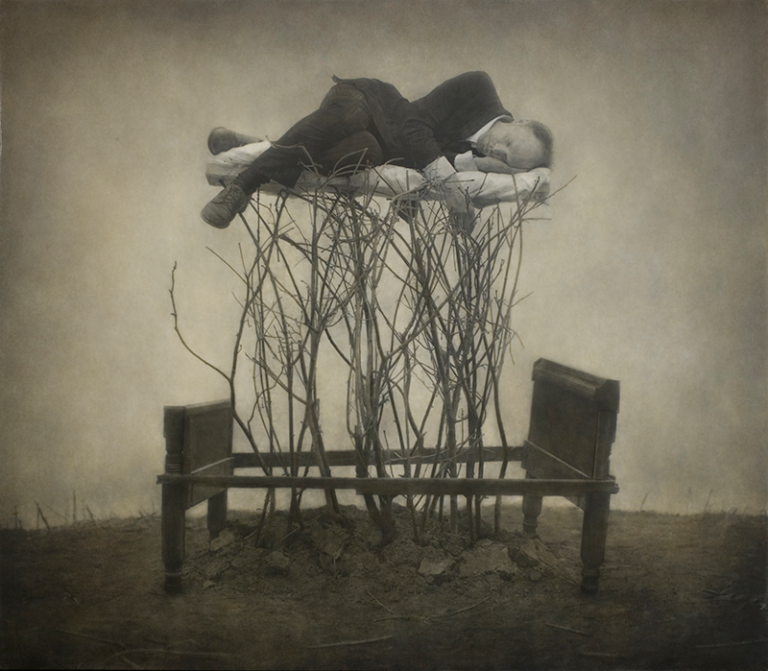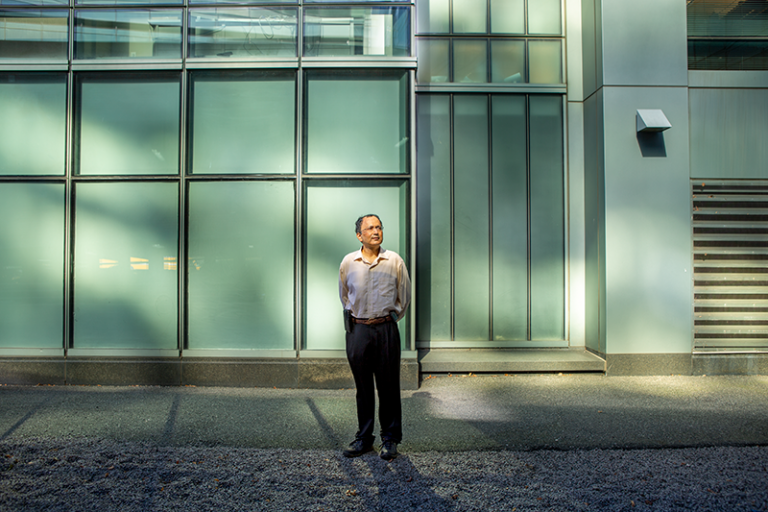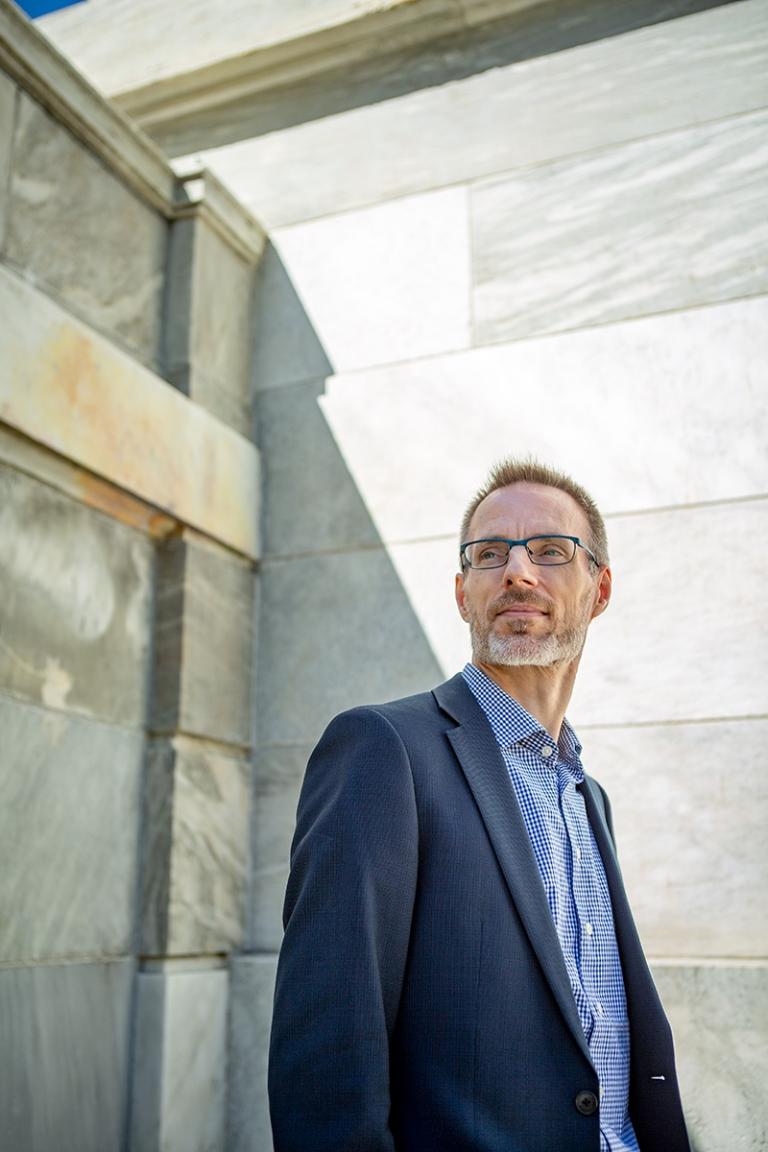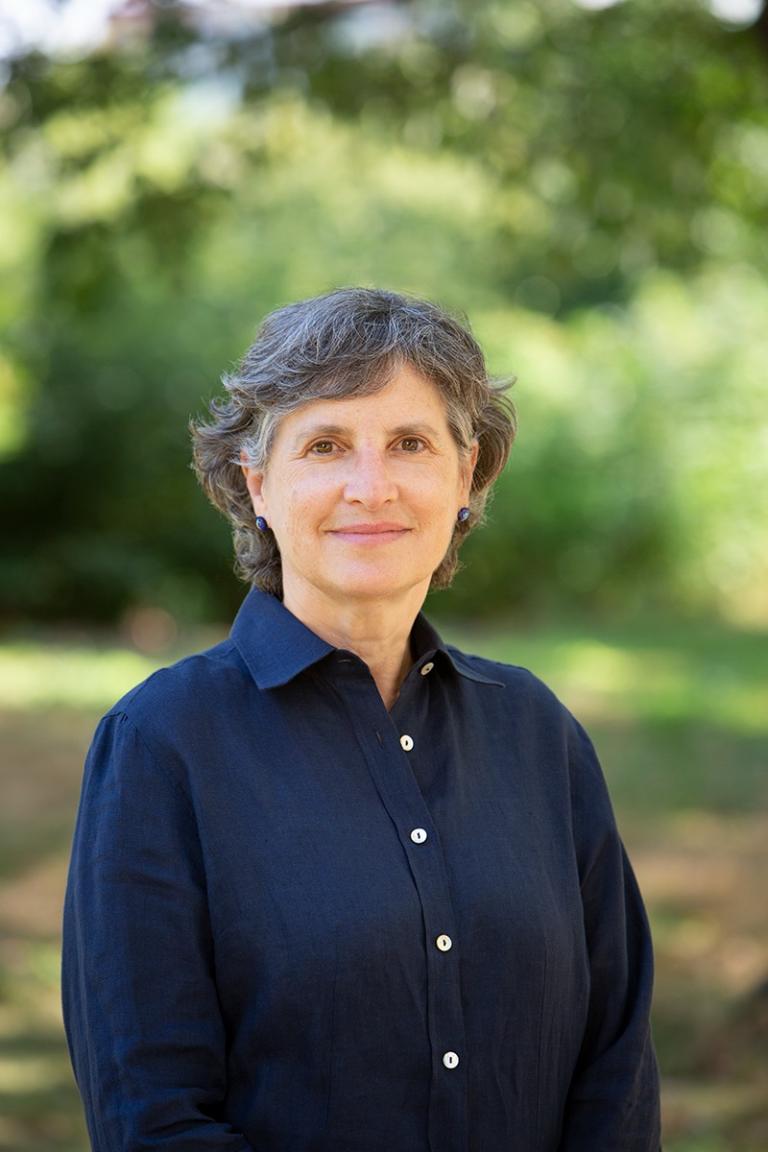Health, Disease, and Chronobiology
Scientists are uncovering the ways circadian rhythms influence our well-being
- 14 minute read
- Feature

One day while he was a graduate student at Stanford University, Charles Czeisler embarked on an experiment that would alter the course of his career. It was 1974, and Czeisler was studying cortisol, a stress hormone that spikes during bouts of acute anxiety. Scientists were aware that cortisol also ebbs and flows in circadian cycles, and Czeisler wanted to profile the hormone’s daily rhythms in the body. So, he outfitted human volunteers with devices that sample blood repeatedly over time, anticipating that cortisol levels would not be affected by sleep. He found, however, that cortisol levels plunged when volunteers fell asleep later than usual, delaying the normal rise that occurs a few hours after bedtime. This showed that sleep interacted with circadian rhythms to affect the hormone’s secretion.
“The results blew me away,” says Czeisler, the HMS Frank Baldino Jr., PhD, Professor of Sleep Medicine at Brigham and Women’s Hospital and director of the Division of Sleep Medicine at HMS. “And they launched me on a lifelong quest to understand the properties of the human circadian pacemaker and how it’s regulated.”

ParkeHarrison
Forestbed
Russian Ply with Golden Artist Materials and UV Varnish 108 cm x 95 cm
Czeisler and other scientists have since gone a long way toward advancing our knowledge of circadian rhythms, which are known to regulate essential functions ranging from hormone release to body temperature, sleep, and metabolism. The body’s inner clocks are exquisitely tuned to environmental cues and optimized for the natural world. That also means they can be thrown off track by life in the modern world. Circadian disruptions are increasingly linked to sleep deficiency, as well as chronic illnesses such as diabetes. But as scientists learn more about how circadian rhythms affect health, “we’re also finding new opportunities for clinical translation,” says Frank Scheer, a professor of medicine in the Division of Sleep Medicine at HMS and a senior neuroscientist in the Division of Sleep and Circadian Disorders at Brigham and Women’s. “Understanding circadian biology is the key to developing novel targeted therapeutic interventions and protective lifestyle modifications.
Robert Thomas, MMS ’03, an HMS associate professor of medicine at Beth Israel Deaconess Medical Center, who studies sleep epidemiology with the Framingham Heart Study and the Korean Genome and Epidemiology Study, would agree. “Sleep is holistic, affecting the heart, brain, lungs, metabolism, truly all parts of the body, and its study involves all the body’s systems. Research is identifying these interactions so that clinicians can develop a broad and deep knowledge of how sleep affects the health of their patients.”
Inner timepieces
The study of circadian rhythms, chronobiology, draws on a long evolutionary history. Billions of years ago photosynthetic cyanobacteria evolved the ability to follow circadian clocks to anticipate and respond to sunshine at dawn, and as more complex plants and animals spread over the planet, they too evolved rhythmic functions that provide adaptive advantages. Birds evolved circadian clocks to orient themselves to the sun’s position during migration, and small mammals, such as chipmunks and squirrels, developed an innate sense to forage at times that minimize their chances of being hunted and killed. Some of the earliest evidence for circadian rhythms was generated during experiments performed more than 300 years ago, when scientists discovered that certain plant species move their leaves at the same time of day even if they are subjected to total darkness. The term “circadian” was later coined to describe biological rhythms that cycle in 24-hour periods, even in the absence of environmental prompts.
In mammals, circadian biology is to a large extent governed by a pinhead-sized bundle of nerve cells in the brain called the suprachiasmatic nucleus (SCN). This so-called master clock presides over a host of physiological processes. Scientists used to think the SCN was tied to its cyclical rhythms by the sleep/wake schedule and social interactions. But in what he describes as his most important discovery, Czeisler reported in 1986 that the SCN is in reality activated by light impulses traveling along retinal nerve cells into the human brain. Light synchronizes the SCN to the solar day, prompting it, for instance, to coordinate cortisol release to increase during the night several hours after bedtime preceded by the release of the sleep hormone melatonin, which begins an hour or two before bedtime and peaks in the middle of the night.

At first scientists assumed that the SCN controlled all aspects of circadian biology and behavior in mammals. But during the late 1990s, scientists made another crucial discovery: Individual organs and cells contain their own circadian clocks, each of them similarly operating on 24-hour schedules driven by a cell-governed molecular clock.
“If you take a cell from the heart, or skin, or liver and put it in a dish, it will happily tick along and exhibit rhythmic behaviors, even without external input from the environment or a neural network,” Scheer explains. An isolated liver cell, for instance, fires up the genes required for metabolism at hardwired intervals, regardless of whether it’s communicating with the SCN or not. Scheer describes these cell- and organ-specific clocks as members of an orchestra. As the central clock, the SCN plays the role of a conductor, he says, synchronizing other clocks to the light/dark schedule through its hormonal and neuronal signaling. But the other “peripheral” clocks can still be reset by behavioral cues specific to their functioning, such as the timing of meals.
Charles Weitz, the Robert Henry Pfeiffer Professor of Neurobiology in the Blavatnik Institute at HMS, says the circadian clocks in our cells are composed of several self-assembling protein structures thought to have properties like those of human-made machines. Comparable protein machines performing other functions “have moving parts and error control,” says Weitz. “They can recognize when something goes wrong and then fix it.” Weitz points out that up to several thousand genes in any human cell are under circadian clock control and that half of all human genes are under circadian clock control somewhere in the body.
“The most important processes of every organ system are regulated by their circadian clocks,” Czeisler says. “Circadian clocks in lung tissue regulate respiration, and in the heart, they regulate cardiac functioning.” Elucidating how the clocks work was considered such a major advance that the scientists who accomplished this feat — Michael Rosbach and Jeffrey Hall, both geneticists at Brandeis University, and Michael Young, a geneticist at Rockefeller University — were awarded the Nobel Prize in Physiology or Medicine in 2017.
Light switch
But when the body’s clocks fall out of synch with each other, problems arise. That’s what is happening today, as modern technologies decouple us from the solar day to which our bodies evolved. We fly through time zones, obscuring our internal ability to distinguish day from night, resulting in jet lag. Most of us spend the evening hours bathed in artificial light that signals daytime to the SCN — shifting circadian clocks later in time, often to our detriment. Czeisler cites research showing that premature infants exposed to 12-hour alternating cycles of light and dark in the neonatal intensive care unit gain more weight, achieve better oxygen levels, and are discharged weeks earlier than babies kept in continuously illuminated NICUs, signifying how solar rhythms are hardwired into the human genome.
Indeed, researchers have found that light is the most potent disrupter of circadian biology. That is especially true of the blue light emanating from our computer screens, “which has much bigger impacts on the circadian system than light of longer wavelengths,” says Jeanne Duffy, an HMS associate professor of medicine at Brigham and Women’s. “In addition to these effects on the circadian system, the light shines directly into your eyes, producing an alerting effect.” During one study, Duffy and her collaborators found that people who nightly read e-books set at a typical brightness had suppressed melatonin levels, took longer to fall asleep, and were less alert the next morning. Duffy’s team concluded that using portable light-emitting devices at night disrupts circadian rhythms and perpetuates sleep deficiency, a chronic problem for one in every three U.S. adults, according to the U.S. Centers for Disease Control and Prevention.
Sleep serves many crucial functions in humans: excess synapses are pruned during sleep, and lymphatic channels open to carry waste products out of the brain, including amyloid proteins, which are damaging to nerve cells. “We also replay many of the experiences we had during the day while sleeping and reinforce pathways by which these memories are stored,” Czeisler says. Sleep deficiency, by contrast, which occurs when adults get less than 7 to 9 hours of sleep per night, is a performance killer. “It lengthens reaction time and impedes judgment and problem-solving,” Czeisler says. “Someone who averages four to five hours of sleep a night for several days in a row develops the same level of cognitive impairment as if they’d been awake for 24 hours, which is equivalent to being legally drunk.” Indeed, research by Czeisler’s team has shown that irregular sleep and light exposure patterns in Harvard undergrads are linked to delayed circadian rhythms and lower academic performance. The irregular sleepers spent less time asleep between 10 p.m. and 10 a.m. and napped more during the day than regular sleepers.

Artificial light is far from the only circadian disrupter — the body’s other clocks are similarly affected by their own ill-timed exposures. Clocks in the gut, for instance, were primed by evolution to receive food during the day; nighttime snacking and meals causes them to “reset.” Clocks in muscle tissue evolved to facilitate daytime physical activity, not nighttime workouts at the gym. If the timing of light, meals, and exercise conflict “your central timekeeper in the brain can be in Boston, while your liver clock is in Paris, and your muscle clock runs on Tokyo time,” Scheer says.
Scheer has found that such circadian misalignment puts people at risk of chronic illnesses. He and other researchers have developed lab protocols for decoupling circadian clocks from their environmental cues and behavioral cycles such as the sleep/wake cycle, so they can zero in on how disrupted rhythms affect health in human volunteers. During one study, Scheer’s team found that human participants living under conditions during which their mealtimes, sleep times, and light/dark schedules had been repeatedly altered exhibited worrisome metabolic changes: Within a few days, their glucose levels after meals were dramatically elevated, blood pressures rose, cortisol levels peaked at bedtime rather than upon awakening, and leptin levels decreased. Leptin is a hormone that suppresses hunger, and low levels stimulate appetite and make people sluggish. All these outcomes are risk factors for diabetes, cardiovascular disease, and obesity.
These and other lab-based findings, Scheer says, help support epidemiological evidence linking nighttime shift work to higher risks for obesity, heart disease, and diabetes that can’t be fully explained by other factors, such as lifestyle or family history. Scheer proposes that nighttime eating habits are at least partly to blame. His team recently reported that nighttime meals disrupted glucose levels and circadian alignments of participants in a carefully controlled study that simulated nighttime work conditions for several days. Participants exposed to simulated night work ate at night to mimic typical shift work behavior, while another group ate during the day. Scheer and his colleagues tracked central rhythms in the participants by measuring their endogenous circadian rhythm in core body temperature, a rhythm governed only by the SCN. They also tracked peripheral circadian rhythms in blood insulin and glucose levels.
They found that core body temperature was unaffected by evening mealtimes, “meaning your central clock doesn’t care when you eat,” Scheer says. However, among nighttime eaters, the endogenous circadian rhythm in glucose shifted by about 12 hours. This shift was not seen in the daytime eating group. Glucose levels also differed in the two groups, with levels in those eating at night elevated while their peers in the daytime eating group showed no such increases. Restricting meals to daylight hours thus prevented these effects.
In the dark of night
Precisely why nighttime eating boosts glucose levels isn’t clear. Accumulating evidence, however, suggests that delayed mealtimes coupled with the normal increase in melatonin levels at night play a contributing role. Scheer’s findings also point to an opportunity: Both day and night workers might minimize their diabetes risk, he says, by eating at times that align better with their circadian biology. Elizabeth Klerman, MD ’86 PhD ’90, an HMS professor of neurology at Massachusetts General Hospital, agrees, adding that this type of evidence helps bring circadian concepts into mainstream medicine and policy.

Western medicine has long turned a skeptical eye toward circadian interventions, in part because the results were thought to lack scientific rigor. Now this is changing. That research describing the inner workings of circadian clocks was deemed worthy of a Nobel Prize was a huge boost to the field, “and people are increasingly starting to do the necessary translational and implementation studies,” Klerman says. “We need more proof of efficacy in appropriate populations and conditions for real-world applications of circadian research to be incorporated into health strategies.”
Klerman’s own studies have direct implications for obstetrics. With collaborators at Brigham and Women’s, Klerman investigated the relationships between light exposure, melatonin levels in blood, and the frequency of uterine contractions during childbirth. Uterine tissue contains melatonin receptors that are upregulated during late-term pregnancy. Klerman’s findings associated high circulating levels of melatonin with more frequent contractions. Exposure to artificial light — especially the short-wave, blue-green variety — suppresses melatonin, and may therefore have a clinical role in lengthening the duration of labor, with implications for mother, baby, and hospital resources.
“Sleep is holistic, affecting the heart, brain, lungs, metabolism, truly all parts of the body, and its study involves all the body’s systems.”
Czeisler’s research, meanwhile, has implications for improving alertness among the shift workers who arguably need it most: medical residents making life-and-death decisions in the hospital. Shifts lasting 24 hours or more are a rite of passage in medical training. But sleep deprivation lowers the alertness and performance of residents, and Czeisler’s own research has shown that it can increase the number of medical errors made by residents. Shifts lasting through the day and night, Czeisler says, require residents to work during circadian phases when their subjective sleepiness is at its highest levels. He and his colleagues recently reported that residents working on shifts capped to no more than 16 hours have better scores on neurobehavioral tests, are not as sleepy, and commit fewer medical errors than residents working longer schedules. The evidence is still a work in progress, however. In a separate study, Czeisler found that residents working shorter shifts made more medical errors if they were overburdened with patients. Czeisler points out that the discrepancy confounds the results.
Finally, on the policy side, circadian researchers are weighing in on a looming change that could affect people living in nearly all fifty U.S. states: a congressional move to establish permanent daylight saving time starting in November 2023. A bill called the Sunshine Protection Act passed in the Senate in March 2022, but has yet to clear the House of Representatives. Daylight saving time begins in spring, when clocks are advanced by one hour so that darkness falls later by clock hour without any change in the amount of sunshine. Then clocks are set back an hour in autumn, thereby restoring standard time. Daylight saving was established decades ago as an energy-saving measure that would cut electrical power use at night — a premise that was later shown not to be true. Those who want to make it permanent say brighter afternoons stimulate more economic activity. Yet daylight saving time has some harmful effects, notably shorter sleep duration, which has in turn been linked to poorer health and cognitive problems. The American Academy of Sleep Medicine, which opposes the bill, has stated that standard time “aligns best with human circadian biology and provides distinct benefits for public health and safety.” Klerman agrees, arguing that making daylight saving permanent “is a horrible idea that puts us forever on the wrong time zone.”
While this debate is being played out, researchers and the public are becoming increasingly aware of how circadian rhythms influence health and behavior. Duffy points out that most people who experience jet lag or the consequences of night-shift work “understand and relate at some level to the influence the circadian system has on our bodies and minds.” But behaviors that disrupt our rhythms, she adds, such as keeping irregular sleep schedules, being exposed to artificial light at night, and eating at irregular times of the day and evening, can take a lot of effort to change. Still, over the past two decades, clinicians and experts in other fields have become “accepting and even enthusiastic about prospects for new countermeasures against the effects of circadian disruption,” Scheer says. “Important work lies ahead, and there’s a critical need for multicenter clinical trials testing the effects of circadian-based treatments. But the tide is turning, and the more we understand the underlying mechanisms, the better the opportunity to design circadian-based approaches that improve health.”
Charles Schmidt is a writer based in Maine.
Images: Wacomka/iStock/GettyImagesplus; Forestbed, copyright 2000, Robert and Shana ParkeHarrison (inner artwork); John Soares (portraits)